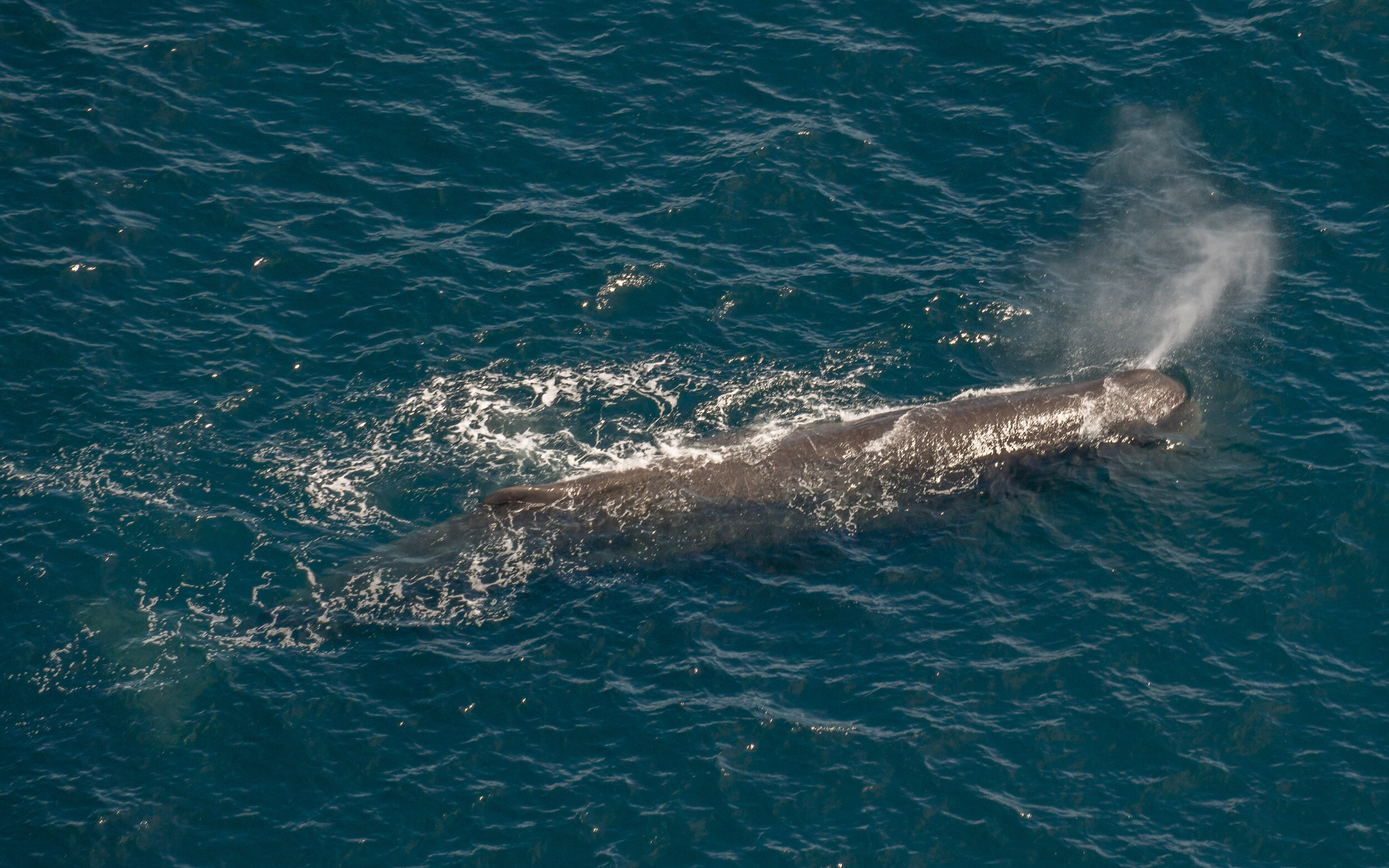Sperm whales - Masters of deep diving
The Sperm whale is the largest of the whales to have teeth, that makes them the largest toothed anything on our planet! Not only are they massive, they also have the largest brain out of any animal! Their brain weight comes in at 7-9kgs and is roughly the same size as a basketball. The more you learn about them, the less you think you know. I have been very fortunate to see these animals on a daily basis for the last couple of years in Kaikōura. Although they are found all around the world it can be quite tricky to find a place where you can reliably encounter Sperm whales on a daily basis.
They are one of the deepest diving mammals of the world, the deepest recorded dive was 2035 metres (according to Mark Cawardine - Handbook of whales, dolphins and porpoises) but it is believed that they can dive deeper than that due to contents found in their stomachs. They are able to “hold” their breath for an incredible great amount of time, as long as 138 minutes! The only other whale that has been observed diving for this long and deep is the Curvier’s beaked whale that I also have had the privilege to encounter in Kaikōura.
After a deep feeding dive which usually lasts for about 45 minutes (30-60 min) they resurface and tend to log motionless on the surface while re-oxygenating. On average they stay on the surface for 10 minutes which seems to be a good amount of time for them to replenish their oxygen levels so that they can head back down again for another feed. As they do not tend to move much while on the surface they are great to view during their surface time.
Sperm whale known as Tiaki diving down for another feeding dive
Kaikōura, New Zealand
Being a toothed whale they rely on echolocation to locate their prey. By making clicks produced by a muscle at the back of their head known as the “monkeys lips” they can produce the loudest sound ever recorded in the animal kingdom, coming in at 230 decibel! These clicks helps the whales located their prey in the deep and dark waters. So what do they feed on then? Most of the greater whales would feed on prey such as krill, plankton and small schooling fish. Sperm whales are quite different. They go for larger prey; greater species of squid, large fish such as ling, cod, groper and even sharks and rays!
As they are very deep divers, you need to be close to deep waters to have a good chance of viewing these whales. There are a few known places in the world where you can see them on a daily basis all year around. Kaikōura is of course one of those places. There is a deep underwater canyon very close to shore and you need to travel only 3 nautical miles (5-6 kms) to get to the start of that canyon system from the local marina. Male Sperm whales can be found here all year round as they forage in the nutrient rich waters in the canyon. Sometimes you can even see the whales from shore, looking out to sea from the coastal highway.
Another great place to view them is the Bleik canyon which is located in the north of Norway and it is a very similar place to what we have here in Kaikoura. This canyon sits around 7 nautical miles (14-15 kms) from Andenes and it is a great opportunity to head out and view male Sperm whales all year around. Not only did I encountered Sperm whales there but I was very fortunate to encounter Orca while they were feeding on herring!
The Trincomalee canyon on the east coast of Sri Lanka is supposed to have Sperm whales but upon my visit I was not able to find any Sperm whales, barely any whales at all (unfortunately). That does not mean that I won’t try again if I get the chance though! So if you want to see a Sperm whale I would probably recommend one of the other two.
Next on my list of places to visit to view Sperm whales is the Azores, a group of islands off Portugal where there are females and calves. Observing Sperm whales in Kaikōura and Norway where there are only males, I have never seen a female Sperm whale or a juvenile/calf so this is most definitely something I would love to encounter!
How about a different view?
I will always prefer to be on the water to view whales. You can hear them breathing, feel the sea breeze and you get that connection to animals when you are present in their environment. That being said, it is pretty cool to see them from another perspective, such as from a plane who has a marine mammal viewing permit.
Sperm whale from the air
Flying with Wings over Whales,
Kaikoura, NZ








